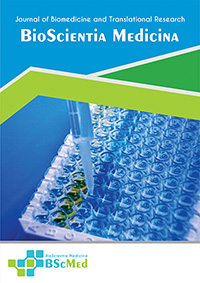Main Article Content
Abstract
Background: Beta-blockers are a cornerstone of therapy for heart failure with reduced ejection fraction (HFrEF), but their efficacy and safety in the burgeoning population of very elderly and frail patients, particularly those with preserved ejection fraction (HFpEF), remain uncertain. This population is characterized by unique pathophysiological features, including altered pharmacokinetics, heightened inflammation, and autonomic dysregulation, which may modulate the treatment effect.
Methods: We conducted a systematic review and meta-analysis following PRISMA guidelines. We searched MEDLINE, Embase, and CENTRAL for randomized controlled trials (RCTs) and observational studies published between 2015-2025 that evaluated beta-blockers versus placebo or standard care in patients aged ≥75 years or defined as frail with heart failure. The primary efficacy outcome was all-cause mortality. The primary safety outcome was treatment discontinuation due to adverse events.
Results: Eight studies (three RCTs, five observational) involving 8,512 patients were included. In the overall population, beta-blocker therapy was associated with a reduction in all-cause mortality (Hazard Ratio: 0.88; 95% CI: 0.79−0.98), but with significant heterogeneity (I2=68%). Subgroup analysis revealed this benefit was confined to patients with HFrEF (HR: 0.72; 95% CI: 0.63−0.83), with no benefit observed in HFpEF (HR: 1.09; 95% CI: 0.95−1.25). In frail patients with HFpEF, a trend towards harm was noted (HR: 1.21; 95% CI: 0.98−1.49). Beta-blockers significantly increased treatment discontinuation (Odds Ratio: 2.15; 95% CI: 1.55−2.98), driven primarily by bradycardia.
Conclusion: Beta-blocker therapy reduces mortality in elderly patients with HFrEF, consistent with findings in younger populations. However, in elderly and frail patients with HFpEF, beta-blockers offer no mortality benefit and may be associated with harm, likely due to a pathophysiological mismatch between the drug's mechanism and the disease state.
Keywords
Article Details
As our aim is to disseminate original research article, hence the publishing right is a necessary one. The publishing right is needed in order to reach the agreement between the author and publisher. As the journal is fully open access, the authors will sign an exclusive license agreement.
The authors have the right to:
- Share their article in the same ways permitted to third parties under the relevant user license.
- Retain copyright, patent, trademark and other intellectual property rights including research data.
- Proper attribution and credit for the published work.
For the open access article, the publisher is granted to the following right.
- The non-exclusive right to publish the article and grant right to others.
- For the published article, the publisher applied for the Creative Commons Attribution-NonCommercial-ShareAlike 4.0 International License.





